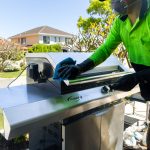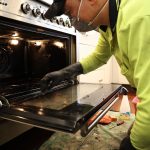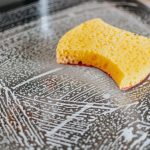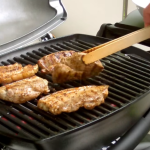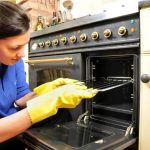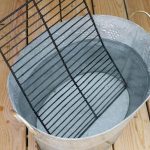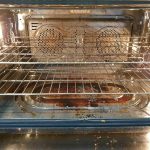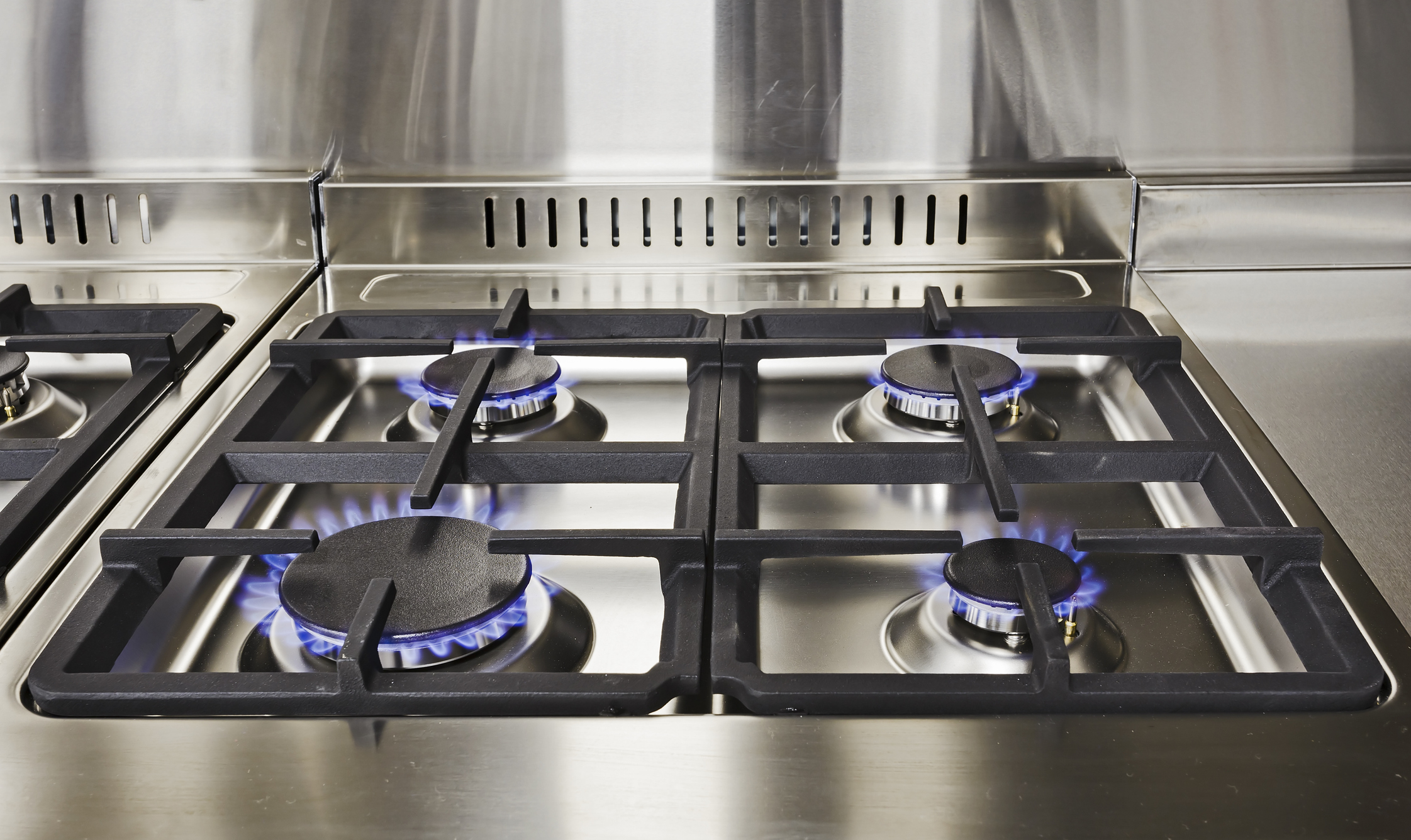
A clean stove isn’t just a centrepiece of your kitchen; it’s also an indicator of the care and attention you put into your home.
Whether you’re cooking up a family feast or simply boiling water for tea, a spotless, shiny stove can uplift the entire experience. But beyond the aesthetic appeal, a well-maintained stove is crucial for its functionality and longevity.
In this blog, we’ll delve into the best practices for stove cleaning. From understanding the nuances of your specific stove type—be it gas or electric, stainless steel or ceramic—to mastering daily cleaning routines and tackling deep-set stains, we’ve got you covered. We’ll also explore the best DIY solutions that promise to make your stove sparkle like new.
Understanding Your Stove Type
Before diving into the cleaning process, it’s crucial to understand your stove type. Different stoves have unique characteristics and thus require tailored cleaning approaches. Let’s break down the common types of stoves and their specific cleaning needs.
Gas Stoves
A gas stove is known for its open flames and gas stove grates. They often accumulate food particles and grease around these areas.
- Key cleaning focus: Regularly cleaning the grates, burner caps, and the stovetop surface around the burners. It’s also important to check and clean the gas ports to avoid blockages that can affect the flame.
Electric Stoves
Electric stoves, particularly those with smooth ceramic tops, present a sleek surface. However, they can be prone to scratches and require gentle cleaning.
- Key cleaning focus: Avoiding abrasive materials and using gentle cleaners to prevent scratching the stovetop surface. Immediate cleaning of spills is also more crucial here to prevent staining.
Materials Used
Different materials used in stove construction also dictate the cleaning method.
Stainless Steel
Stainless steel is durable and resistant to rust, but it can show water spots and fingerprints easily.
- Cleaning strategy Use specific stainless steel cleaners to maintain shine and avoid chlorine-based cleaners or steel wool, which can damage the surface.
Ceramic and Glass
These materials are common in electric stoves and offer a smooth cooking stovetop surface.
- Cleaning strategy: Use soft cloths and avoid harsh scouring pads. Special ceramic or glass cleaners can be used to remove tough stains without causing scratches.
Enamel
Enamel surfaces are found in some gas and electric stoves, known for their colour and smooth finish.
- Cleaning strategy: Use gentle cleaners and avoid abrasive tools. Enamel can chip or crack if handled roughly.
Understanding your stove type and the material it’s made from is the first step in choosing the right cleaning methods and products. This ensures not only effective cleaning but also the longevity and aesthetic appeal of your stove.
Daily Cleaning Tips
Maintaining an aesthetic and functional stove doesn’t require arduous effort; it’s the little things done daily that make a big difference. Here, we’ll explore simple yet effective daily cleaning practices that keep your stove in top condition.
Wipe Down
The key to keeping your stove spotless is regular wiping. After every use, once the stove is cool, take a few minutes to wipe it down. This prevents the buildup of grease and food particles, which, over time, can become stubborn to remove.
Best Materials for Wiping
- Microfiber cloths are excellent for this purpose. They are soft, highly absorbent, and won’t scratch your stove’s surface.
- For tougher stains, use a damp soft sponge, but be gentle to avoid scratching the surface.
- Avoid using abrasive materials or scouring pads on glass stovetops or ceramic stovetops, as they can cause permanent scratches.
Dealing with Spills
Accidents happen, and spills are inevitable. However, the manner in which you handle these spills can greatly impact your stove’s appearance and health.
Immediate Action
- Address spills as soon as the stove is cool enough to touch. This prevents the spill from hardening and becoming more difficult to clean later.
- For liquid spills, dab with a paper towel or a soft cloth. Avoid spreading the spill.
- For thicker substances or food particles, gently scrape them off with a plastic scraper or a spatula. Be careful not to scratch the surface.
Avoiding Water Marks
- After cleaning a spill, always dry the area thoroughly with a dry cloth or towel. This prevents water marks, especially on stainless steel stovetops.
Incorporating these daily cleaning tips into your routine, you can keep your stove looking new and functioning efficiently. Not only does it make your kitchen more inviting, but it also saves you time and effort during deeper cleaning sessions.
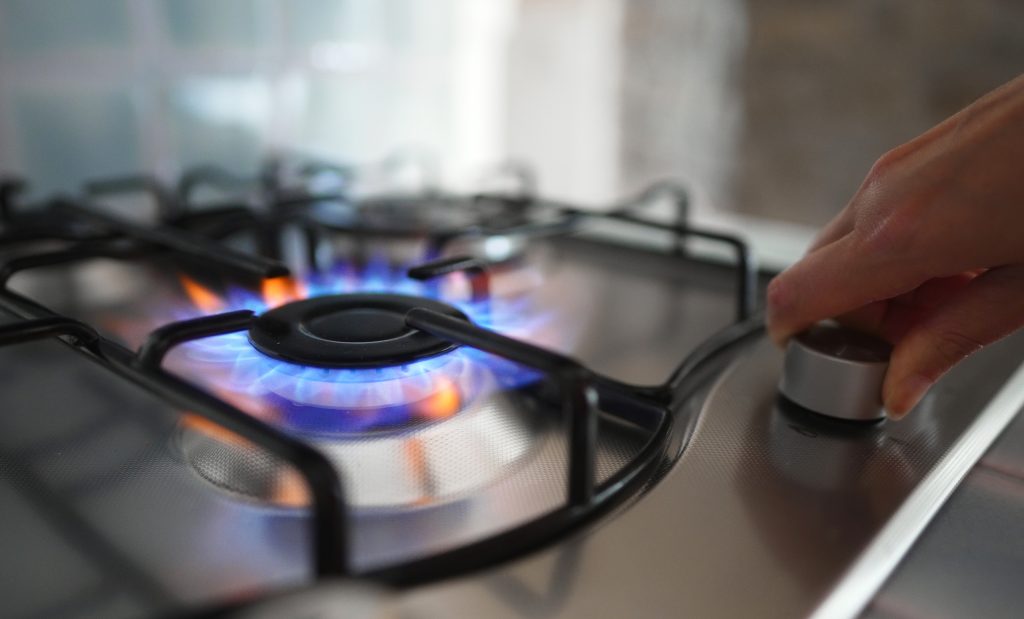
Deep Cleaning Solutions
While daily maintenance is crucial, your stove occasionally requires a more thorough cleaning. This deep cleaning not only tackles the visible dirt but also addresses the unseen buildup that can affect your stove’s performance and longevity.
The Natural Approach
Natural cleaning solutions are not only environmentally friendly but also gentle on your stovetop. Here are some effective DIY methods:
Baking Soda and Vinegar
- Use baking soda and water. Apply this to the stove surface and let it sit for about 15-20 minutes.
- Next, spray a little vinegar over the paste. This will cause a fizzing action that helps lift stubborn stains.
- Wipe clean with a damp cloth. This method is particularly effective for removing cooked-on food and grease.
Lemon and Salt
- For freshening up and minor stains, lemon is a great option. Cut a lemon in half, dip it in salt, and use it to scrub the stovetop.
- The citric acid in lemon helps break down grease, while the salt acts as a mild abrasive.
Commercial Cleaners
When natural solutions aren’t enough, commercial cleaners can offer a more powerful alternative.
Choosing the Right Products
- Opt for cleaners that are specifically designed for your stove type. For instance, use glass top cleaner for ceramic stovetops.
- Read the labels and follow the instructions carefully, especially for heavy-duty degreasers, to avoid damaging your stove.
Application Tips
- Apply the cleaner as directed and let it sit for the specified time to soften tough grime.
- Use a non-abrasive scrubber or cloth to gently wipe away the cleaner, followed by a damp clean cloth to remove any residue.
Cleaning Tools
Using the right tools is essential for effective deep cleaning without damaging your stove.
Scraper
For hardened debris, a plastic scraper can be a lifesaver. It’s firm enough to remove debris but won’t scratch the surface, unlike metal scrapers.
Soft Brushes and Sponges
Soft-bristled brushes can get into nooks and crannies, especially around burners and knobs. Sponges on the other hand, especially those with a non-abrasive side, are great for general cleaning and wiping off cleaning agents.
Microfiber Cloths
Are ideal for the final wipe-down, microfiber cloths don’t leave lint and give a streak-free finish, especially on areas that are glossy like a glass stovetop or a stainless steel surface.
Deep cleaning your stove might seem like a daunting task, but with the right techniques, tools, and cleaning agents, it can become a manageable and even satisfying part of your kitchen routine.
Stubborn Stains and Problem Areas
Tackling Tough Stains
Even with regular cleaning, your stove can accumulate stubborn stains and grime over time. In this section, we’ll explore how to tackle these challenging areas without causing damage to your stove.
For Burnt Food debris
- Soak the area with a mixture of hot water and dish soap. This helps loosen the burnt particles.
- Use a plastic scraper or a non-abrasive pad to scrape off the residue gently.
- For persistent stains, apply a paste of baking soda and water, leave it for 15-20 minutes, and then clean.
For Grease Splatters and Stains
- Degreasers are effective for heavy grease build-up. Apply the degreaser, leave it for a few minutes, and then wipe it off.
- For a natural solution, use a mixture of vinegar and water. The acidity of vinegar helps break down the grease.
Knobs and Handles
Knobs and handles often get overlooked in regular cleaning, harbouring grease and bacteria.
Cleaning Knobs
- Remove the knobs, if possible, to clean them thoroughly. Soak in soapy water, then scrub, rinse, and dry.
- If knobs can’t be removed, wipe them with a damp cloth and a mild cleaner. Be careful not to let water seep into the openings.
Handles and Panels
- Use a gentle cleaner and a soft cloth to wipe down handles and control panels.
- Avoid using abrasive cleaners or scrubbers that can scratch or damage the finish.
Maintenance and Prevention
Regular maintenance and preventative measures are key to keeping your stove in top condition and reducing the need for labour-intensive cleaning. Here’s how to make stove cleaning easier and more effective long-term.
Regular Maintenance
- Set a schedule for both daily wipe-downs and more thorough weekly or bi-weekly cleanings. Consistency is crucial in preventing buildup.
- Check and clean different components of your stove regularly, such as burner caps and grates in gas stoves or the heating elements and the area around them with an electric stove.
Preventative Measures
- Use stove top covers or splatter screens while cooking to minimise grease and food splatters.
- Immediately handle spills and overflows. The longer they sit, the harder they are to clean.
- Consider using liners for drip pans or under burners, which can be easily replaced or cleaned separately.
Integrating these maintenance and prevention tips into your routine, you can extend the life of your stove and keep it looking as good as new.
Final Words
From understanding the specific needs of your stove type to implementing daily cleaning routines, tackling tough stains, and adopting preventative measures, each step is crucial in preserving the heart of your kitchen.
If you’re looking to improve the overall look of your stovetop, turn to Magic BBQ and Oven for your stovetop cleaning needs. Our team are adept at ensuring your surfaces remain in top condition year-round. Contact us today to learn more about how we can help clean your stove.
Other articles you may
be interested in


